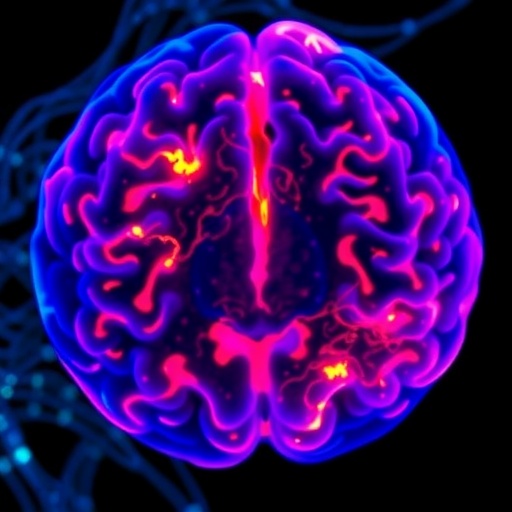In a groundbreaking advancement in the fight against glioblastoma, recent research has unveiled a surprising ally in enhancing the effectiveness of chemotherapy: the glucose transporter protein GLUT3. This discovery illuminates new pathways for improving drug delivery to brain tumors, potentially revolutionizing treatment paradigms for one of the most aggressive and fatal forms of brain cancer. Through innovative experimental approaches, scientists have demonstrated that GLUT3, traditionally known for its role in cellular glucose uptake, also facilitates the transport of key chemotherapeutic agents, thereby increasing the sensitivity of glioblastoma cells to these drugs.
Glioblastoma multiforme (GBM) remains a formidable clinical challenge due to its infiltrative growth patterns, molecular heterogeneity, and the protective nature of the blood-brain barrier (BBB). Chemotherapeutic regimens often fall short due to inadequate drug delivery and intrinsic resistance mechanisms within tumor cells. However, the present study identifies GLUT3 not merely as a passive glucose channel but as an active conduit for chemotherapeutic agents such as temozolomide and capecitabine, two frontline drugs in glioblastoma treatment protocols. This breakthrough underscores the complex biology of tumor metabolism and drug transport, offering hope for enhanced therapeutic efficacy.
By employing advanced molecular and cellular assays, the researchers meticulously characterized the interaction between GLUT3 and the chemotherapeutic agents. The study revealed that GLUT3 possesses a hitherto unappreciated transport capability, enabling it to facilitate the cellular uptake of temozolomide and capecitabine into glioblastoma cells. This transport function is critical because effective intracellular concentration of these drugs directly correlates with their cytotoxic efficiency. The findings suggest that enhancing or preserving GLUT3 expression in tumor cells could potentiate drug delivery and, consequently, tumor cell kill rates.
The mechanistic insights underline that GLUT3’s ability to transport chemotherapeutics challenges previous dogma which confined its role to glucose metabolism. This dual functionality may explain the variable clinical responses observed in glioblastoma patients and raises the possibility that modulation of GLUT3 expression or activity could become a strategic target for augmenting chemotherapy outcomes. Notably, the research delineated that glioblastoma cells with elevated GLUT3 levels exhibited increased chemosensitivity, highlighting the transporter’s role as a molecular determinant of therapeutic success.
Furthermore, the study’s findings have significant implications for overcoming the blood-brain barrier’s formidable obstacle. The BBB’s selective permeability usually restricts many chemotherapeutics from reaching brain tumors in adequate therapeutic concentrations. GLUT3, highly expressed in glioma cells, may serve as an alternative passageway across the tumor cell membrane, enhancing drug ingress where traditional diffusion mechanisms may fail. This property makes GLUT3 an exceptionally attractive target for drug delivery innovations.
Intriguingly, the researchers noted that the pharmacological utilization of GLUT3’s transport capabilities could be fine-tuned to increase drug uptake selectively in tumor cells, minimizing systemic toxicity. Traditional chemotherapy often suffers from narrow therapeutic windows because of non-specific distribution throughout the body. By capitalizing on GLUT3 overexpression in glioblastoma cells, therapeutic regimens could be precisely tailored to deliver higher doses locally within the tumor, sparing healthy tissues from adverse effects.
Additionally, the research explored how GLUT3 expression correlates with glioblastoma prognosis. Patients exhibiting higher GLUT3 levels within their tumors demonstrated better responses to temozolomide and capecitabine treatments. This correlation suggests a potential predictive biomarker function for GLUT3, enabling clinicians to stratify patients more effectively and personalize therapeutic approaches based on transporter expression profiles.
The implications for drug development are equally profound. Pharmaceutical efforts could now focus on designing chemotherapeutic agents or prodrugs optimized for GLUT3-mediated transport, maximizing their intracellular delivery and potency. Moreover, this understanding may foster the creation of combination therapies where GLUT3 expression is pharmacologically upregulated prior to chemotherapy administration, thereby sensitizing tumor cells to treatment.
By integrating these findings with current knowledge of glioblastoma pathophysiology, the research provides a comprehensive framework for novel therapeutic strategies. It bridges metabolic biology with pharmacology and neuro-oncology, illustrating how tumor-specific metabolic traits can be exploited to overcome one of oncology’s greatest treatment hurdles. The discovery paves the way for translational studies and clinical trials aimed at validating GLUT3-targeted therapeutic interventions.
The study’s use of sophisticated imaging techniques and molecular transport assays also pioneers methodological advances that could be applied to other cancer types expressing GLUT3 or similar transporters. This broader applicability hints at a new frontier in cancer treatment, wherein transporter proteins become central players in precision medicine, allowing for more effective drug delivery tailored to the unique metabolic fingerprint of each tumor.
Despite these promising outcomes, the authors caution that further research is essential to fully understand GLUT3’s transport mechanisms and potential side effects of manipulating its activity. Detailed pharmacokinetic and toxicological profiling in clinical settings will be crucial to translate these insights into safe, effective therapies. Careful evaluation in in vivo models and human trials will determine whether targeting GLUT3 can sustainably enhance chemosensitivity without unintended consequences.
Moreover, the research invites questions about the interplay between GLUT3 and other glucose transporters or metabolic pathways in glioblastoma cells. Understanding how GLUT3 integrates into the broader metabolic network of tumor cells might reveal additional therapeutic targets or combinatorial approaches to amplify treatment effects.
In conclusion, this seminal study redefines the role of GLUT3 in glioblastoma biology, transforming it from a mere glucose transporter to a critical facilitator of chemotherapy drug delivery. By elucidating a novel drug transport mechanism, it opens a path toward more effective, targeted glioblastoma treatments that leverage tumor-specific metabolic features. This paradigm shift holds promise for significantly improving outcomes for patients afflicted with this devastating disease, marking a milestone in neuro-oncological research and therapy development.
Subject of Research:
Article Title:
Article References:
Diao, H., Sun, Y., Zhou, X. et al. GLUT3 enhances chemosensitivity in glioblastoma by transporting temozolomide and capecitabine. Cell Death Discov. 11, 382 (2025). https://doi.org/10.1038/s41420-025-02664-w
Image Credits: AI Generated
DOI: https://doi.org/10.1038/s41420-025-02664-w




